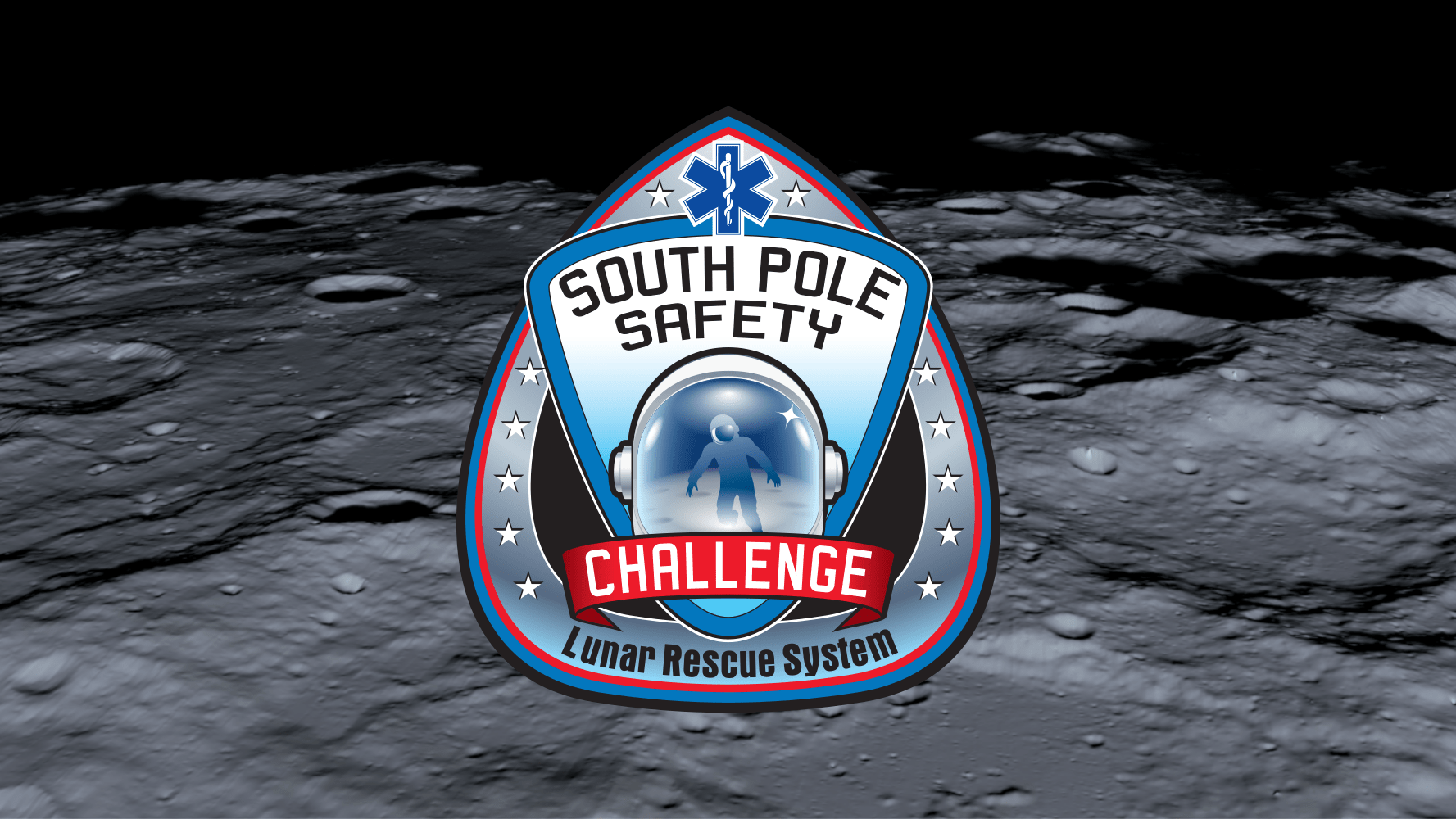by Dary Felix Garcia
NASA is preparing to make history by sending humans to the Moon’s South Pole. There, astronauts will conduct moonwalks for exploration, science experiments, and prepare humanity for the journey to Mars. Missions of this scale require extensive planning, especially when accounting for emergency scenarios such as a crew member becoming incapacitated.
To address this critical risk, the South Pole Safety Challenge invited the public to develop a compact, effective device capable of safely rescuing astronauts during emergency situations on the Moon’s surface. Given the harsh and unpredictable conditions of the lunar South Pole, the rescue system must be lightweight, easy to use, and able to transport an incapacitated crew member weighing approximately 755 lbs. (343 kg), representing the crew member and their suit, without the help of the lunar rover. It must also be capable of covering up to 1.24 miles (2 kilometers) across slopes as steep as 20 degrees.
“The initiative saved the government an estimated $1,000,000 and more than three years of work had the solutions been produced using in-house existing resources,” said Ryon Stewart, acting Program Manager of NASA’s Center of Excellence for Collaborative Innovation. “The effort demonstrated how crowdsourcing provides NASA with a wide diversity of innovative ideas and skills.”
The global challenge received 385 unique ideas from 61 countries. Five standout solutions received a share of the $45,000 prize purse. Each of the selected solutions demonstrated creativity, practicality, and direct relevance to NASA’s needs for future Moon missions.
The global challenge received 385 unique ideas from 61 countries. Five standout solutions received a share of the $45,000 prize purse. Each of the selected solutions demonstrated creativity, practicality, and direct relevance to NASA’s needs for future Moon missions.
First Place: VERTEX by Hugo Shelley – A self-deploying four-wheeled motorized stretcher that converts from a compact cylinder into a frame that securely encases an immobilized crew member for transport up to 6.2 miles (10 kilometers). Second Place: MoonWheel by Chamara Mahesh – A foldable manual trolley designed for challenging terrain and rapid deployment by an individual astronaut. Third Place: Portable Foldable Compact Emergency Stretcher by Sbarellati team – A foldable stretcher compatible with NASA’s Exploration Extravehicular Activity spacesuit. Third Place: Advanced Surface Transport for Rescue (ASTRA) by Pierre-Alexandre Aubé – A collapsible three-wheeled device with a 1.2 mile (2 kilometer) range. Third Place: Getting Rick to Roll! by InventorParents – A rapidly deployable, tool-free design suited for functionality in low gravity settings.NASA is identifying how to integrate some features of the winning ideas into current and future mission designs. Most intriguing are the collapsible concepts of many of the designs that would save crucial mass and volume. Additionally, the submissions offered innovative wheel designs to enhance current concepts. NASA expects to incorporate some features into planning for surface operations of the Moon.
HeroX hosted the challenge on behalf of NASA’s Extravehicular Activity and Human Surface Mobility Program. The NASA Tournament Lab, part of the Prizes, Challenges, and Crowdsourcing program in the Space Technology Mission Directorate, managed the challenge. The program supports global public competitions and crowdsourcing as tools to advance NASA research and development and other mission needs.
Find more opportunities at www.nasa.gov/get-involved/
Read More Details
Finally We wish PressBee provided you with enough information of ( NASA’s Lunar Rescue System Challenge Supports Astronaut Safety )
Also on site :
- Barbra Streisand Reveals Jaw-Dropping Details of Scandalous Proposal from Hollywood Icon!
- In Q1 2025, enterprise SaaS M&A deal count hit 210, according to PitchBook
- ‘Beyond the Gates’ Star, 38, Debuts New Series Amid Exit Rumors

